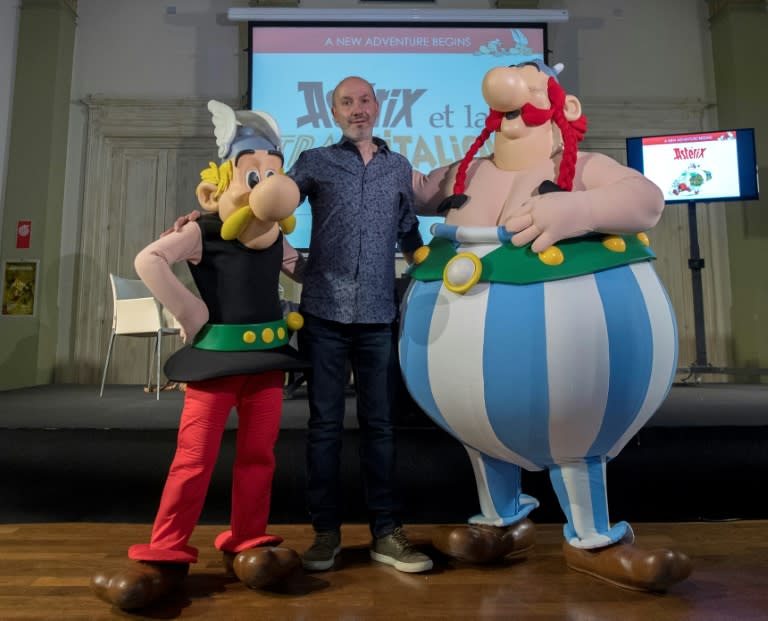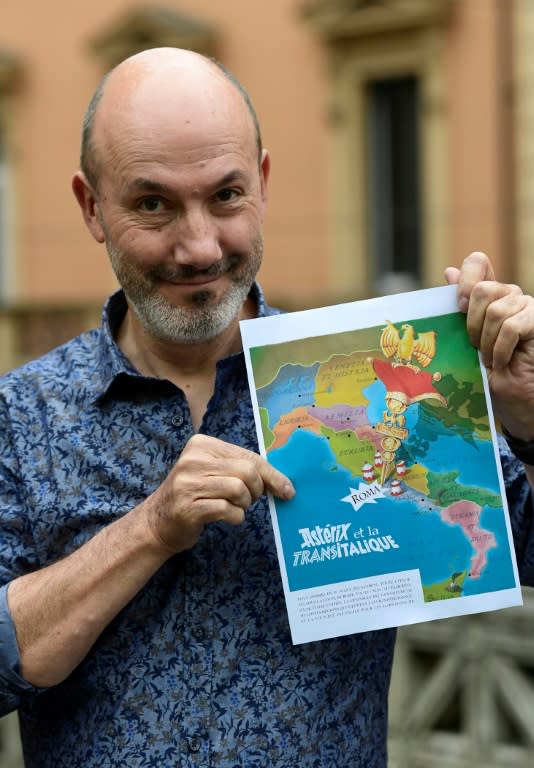Italy beckons for Asterix and Obelix
After decades battling Julius Caesar and his Roman legions, Gallic hero Asterix and his sidekick Obelix finally discover the rest of Italy in their latest adventure, its authors revealed Wednesday. "Asterix and the Race through Italy", the 37th story in a series that has been a global publishing phenomenon for over half a century, will not hit the shelves until October 19. But writer Jean-Yves Ferri offered a few hints as to what it is all about about in an interview with AFPTV at the Bologna Children's Book Fair. It is the year 50 BC and the lands and islands that now make up modern Italy are ostensibly under Caesar's control. But just like in neighbouring Gaul, home to the indefatigable duo, resistance to rule from Rome is flourishing in the provinces, much as it still is today in a country where local identities and loyalties remain strong. "With the never ending battle between the Gauls and the Romans, the idea of Asterix coming to Italy was always there, under my nose," Ferri, 57, said. "And it was also a way to acknowledge Alberto Uderzo's Italian roots," he added in a reference to the now-retired illustrator who created the characters along with late writer Rene Goscinny. - Roman-bashing, Boar-chomping - The romp from Venice to Sicily is the third from Ferri and illustrator Didier Conrad after "Asterix and the Picts" (2013), which was set in Scotland, and "Asterix and the Missing Scroll" (2015), a satire of modern media centred on Caesar publishing a set of typically pompous war memoirs. The new album will feature a bigger-than-usual role for the Roman-bashing, boar-chomping Obelix, and a large cast of new characters, Ferri promised. Otherwise the publishers were giving little away about the storyline in line with their usual drip-drip marketing strategy. Food is usually a theme in Asterix tales and it will be intriguing to see how it is handled, given that the Italian culinary staples of pizza, pasta and tomatoes did not exist at the time it is set. That problem was memorably sidestepped in "Asterix in Britain", in which the locals would take a break from fighting to drink hot water -- before Asterix introduces them to tea rather than share the magic potion that is the secret of the Gauls' fighting prowess. The first Asterix stories were published in the Franco-Belgian comic Pilote in 1959 and Uderzo will celebrate his 90th birthday later this month. He only retired in 2011 having done both the writing and drawing after the death of Goscinny in 1977. - Sons of immigrants - The books have been translated into more than 100 languages and dialects, including ancient Greek and Latin, editions that are highly-prized as teaching tools. More than 370 million copies have been sold and the faithful friends have featured in multiple films. While Conrad was anointed by Uderzo as his successor on the drawing side, Ferri admits to feeling pressure to live up to Goscinny's standard of wry story telling. "I am very conscious of the fact that they are part of our cultural heritage and that we can't let people down," he said. "I make a big effort to stick to Goscinny's template, with each page constructed around the gags." That has become harder in a world where Asterix's idiosyncratically French view of other nationalities has come to be seen in some quarters as verging on xenophobic stereotyping. Ferri dismisses the charge, saying his hero is the incarnation of the universal values of fraternity and resistance to tyranny. "Asterix has always had a relationship with other cultures based on friendship and interest," he says. "He goes to help out the Corsicans, the Belgians, the British and the Spanish. "As for all the rest, Goscinny and Uderzo were always very clear that politics and ideology were not their cup of tea. "You musn't forget that the former was the son of Jewish immigrants from Eastern Europe and the latter came from a family of Italian immigrants to France."



